Welcome to Rue Muffetarde
Bonjour,
Welcome to a much cooler Paris. It’s almost 8am and it’s 62 degrees and cloudy. After two days of near 90 degrees, this will feel wonderful. We’ve managed through as we always do, but it’s pretty tough on these old bodies!
James and Andrew’s trip is winding down. They leave tomorrow after twelve, fast-paced days. I would say that they have been exposed to Parisian life in many different areas, and we hope they have been able to draw some good conclusions for their future here. What a huge decision for them and we pray they will make a good one.
After a slow start to the morning, we invited them to go to rue Mouffetard, one of the oldest streets in Paris on the Left Bank or Latin Quarter. The early travel bloggers before Rick Steves heralded this street as a must-see and first caught my attention. We’ve been going almost every year, only to watch it deteriorate. But yesterday, I saw new life, some new adorable shops and even an improvement in the old cobblestoned street. I’m such a traditionalist, don’t know if I like it or not!
Our intention had been to eat on rue du pot de fer, the street of the iron pot, but Jamie wanted beouf Bourguignon one more time and spotted a very cute restaurant touting it as their plat du jour. It was a very good choice as the food was quite good, nice restroom and the best…air conditioned. It was trés, trés chaud, very hot.

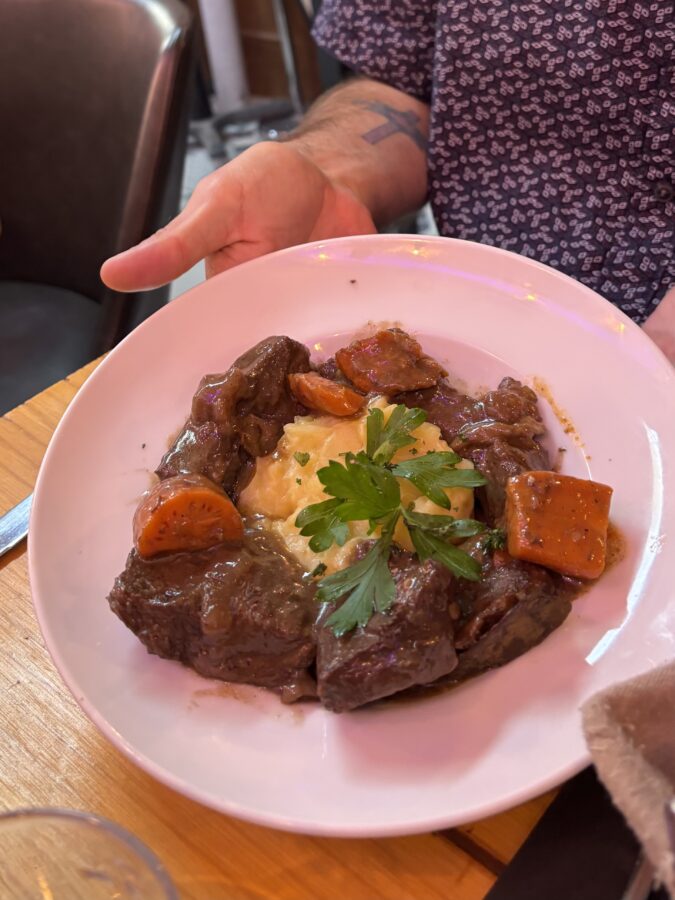
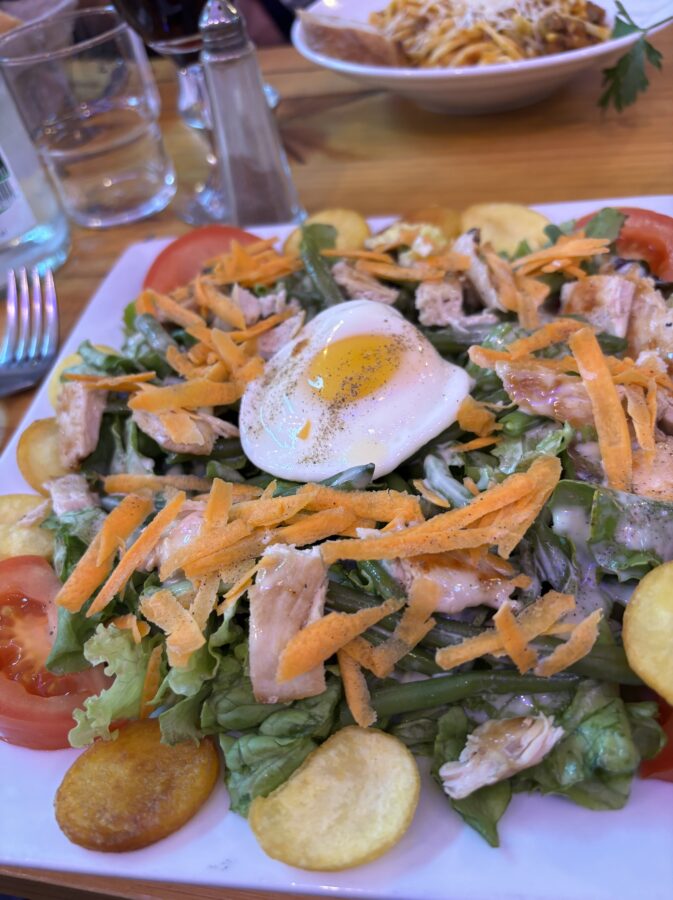
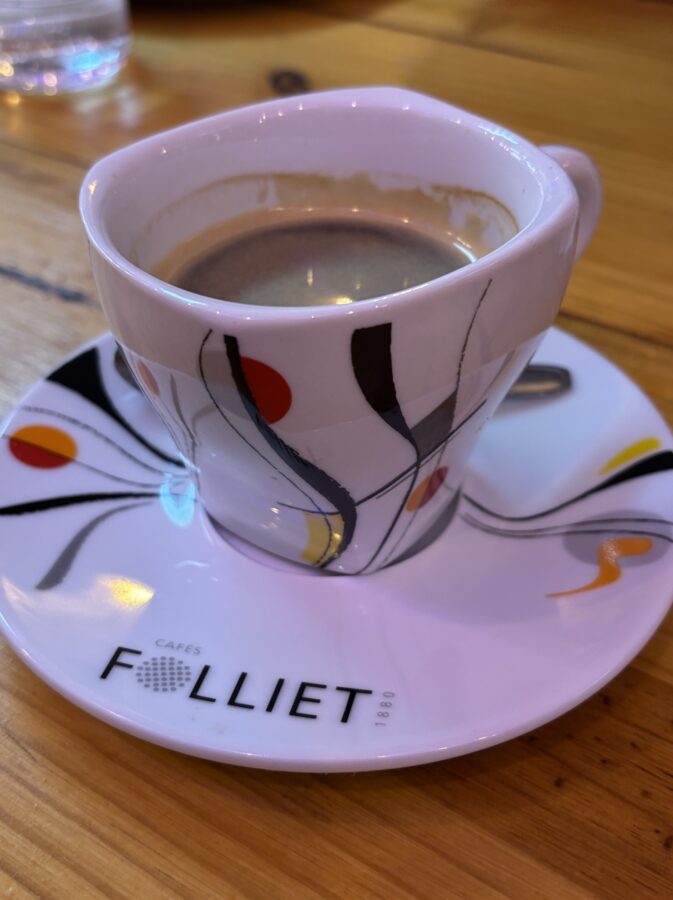
Join us for a stroll up and down this classic, wonderful pedestrian street!
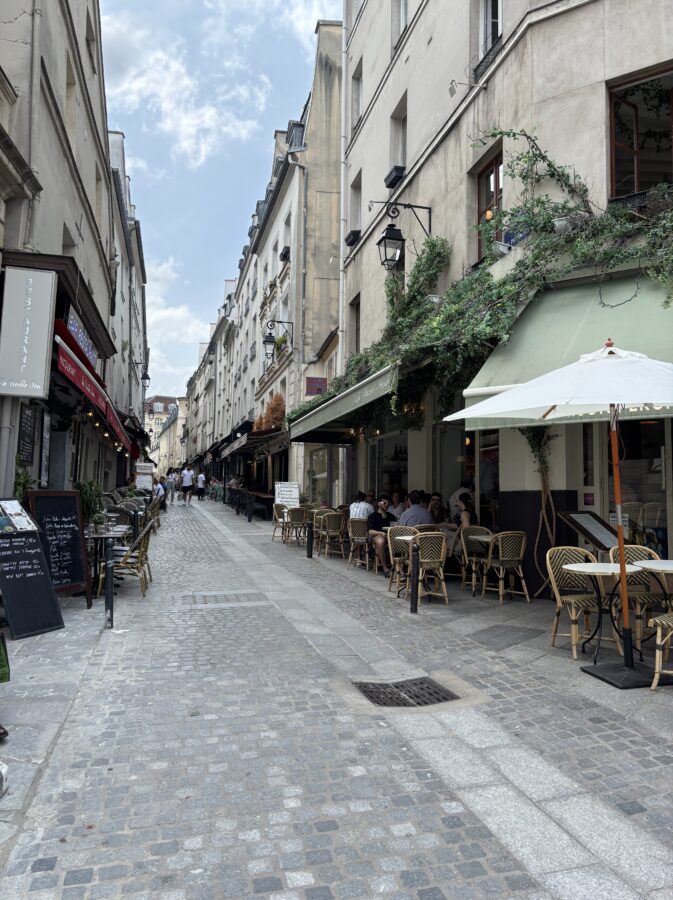
Over the top of the hill, down to the Pantheon area as we continue our stroll.
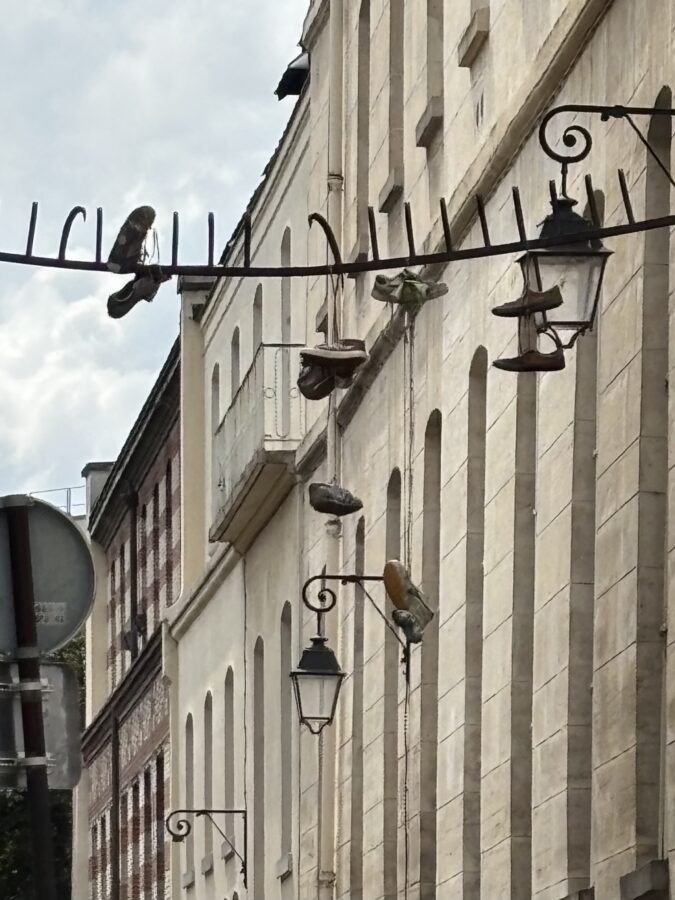
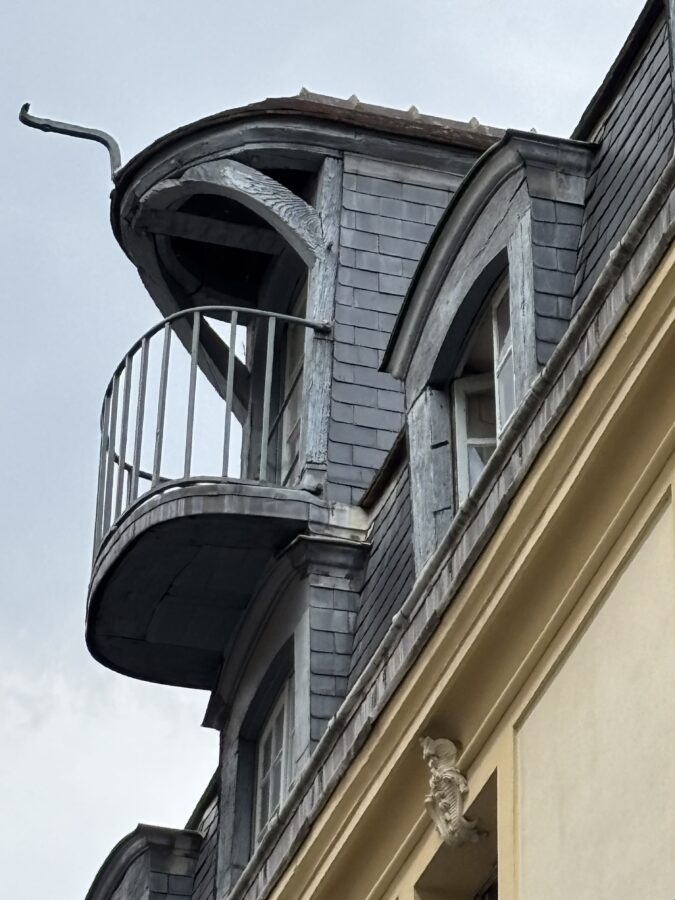
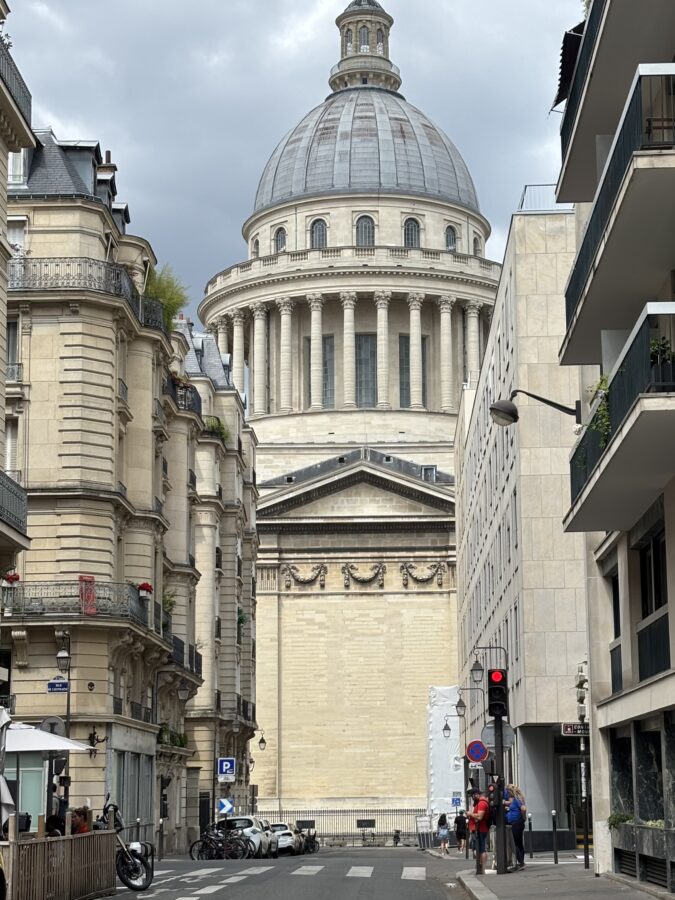
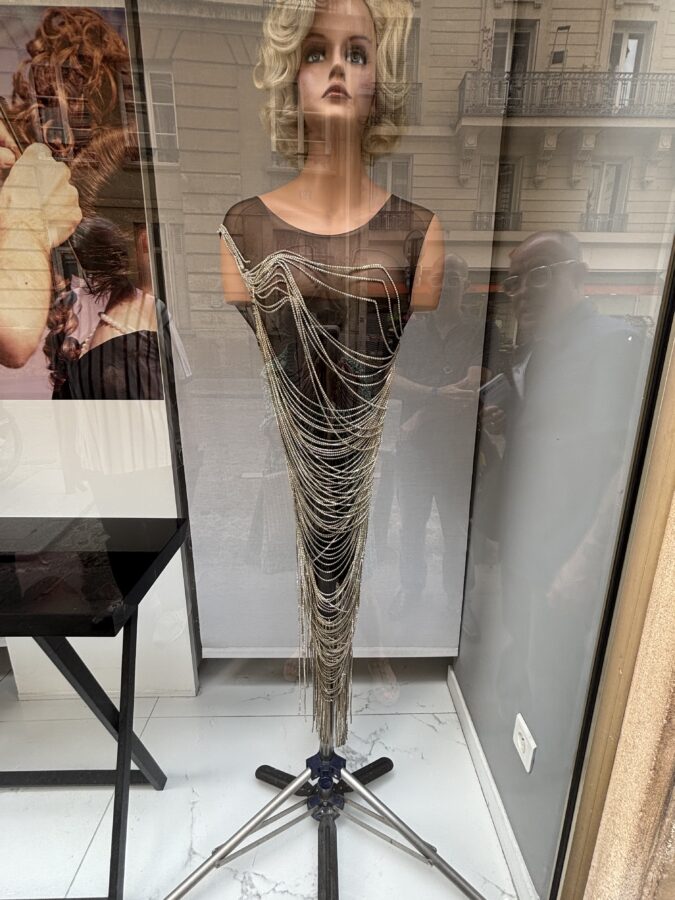


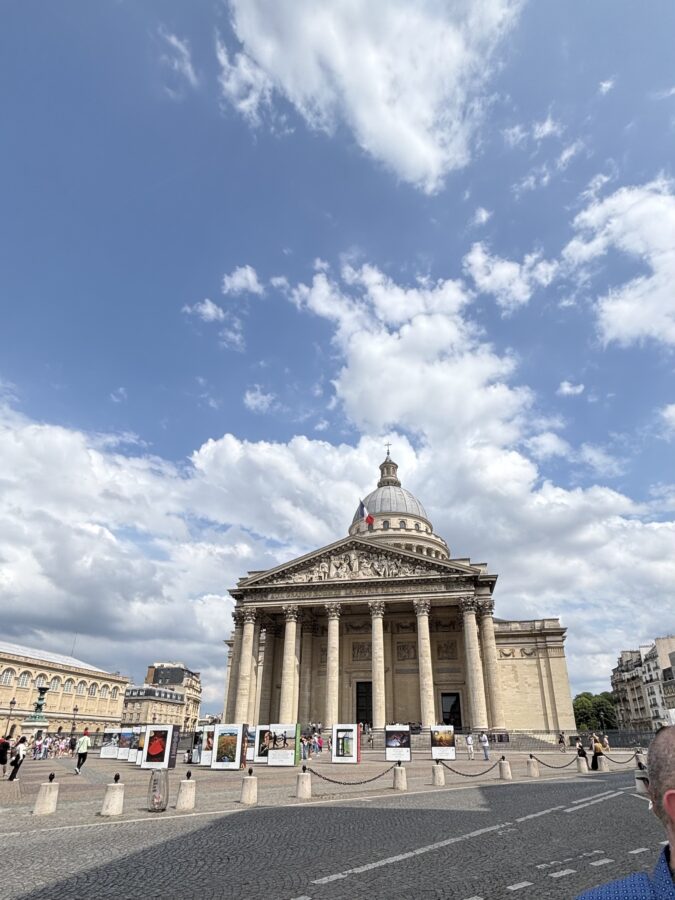

We continued down towards the river and St. Germaine, then crossed the islands to our apartment. Decided just to walk it, brave souls that we are.
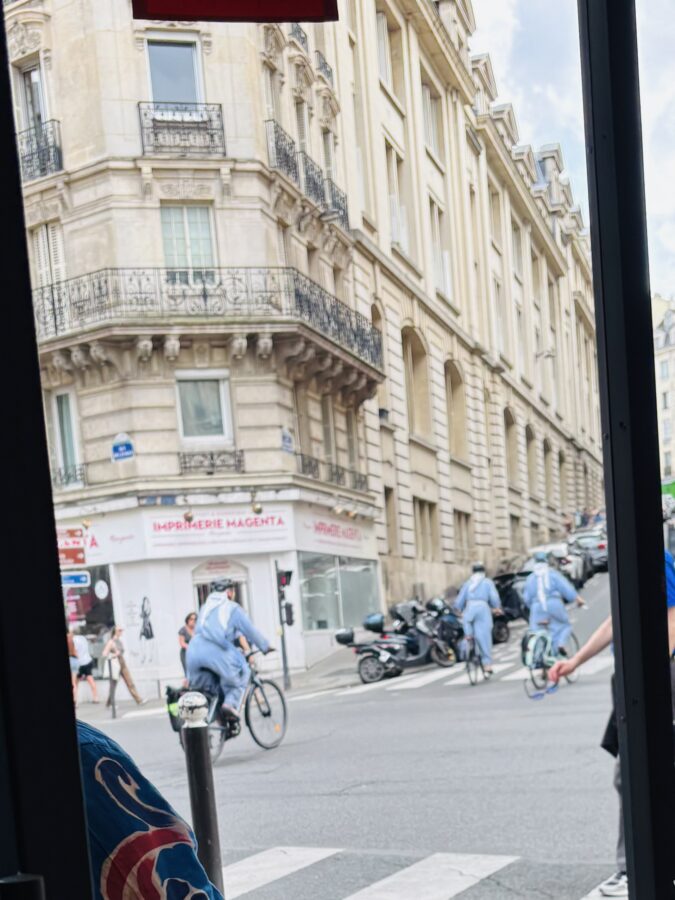
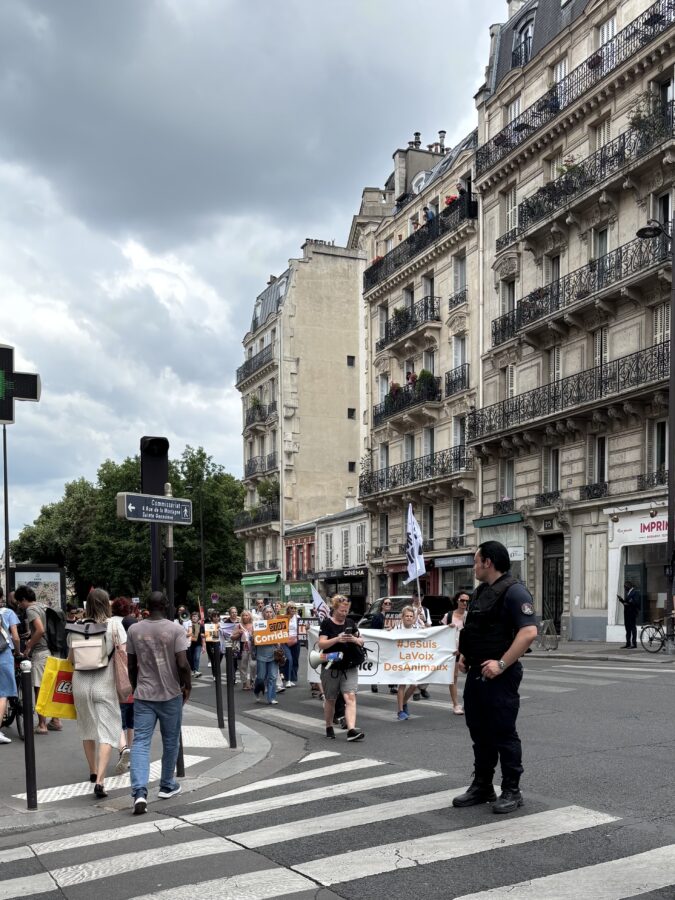
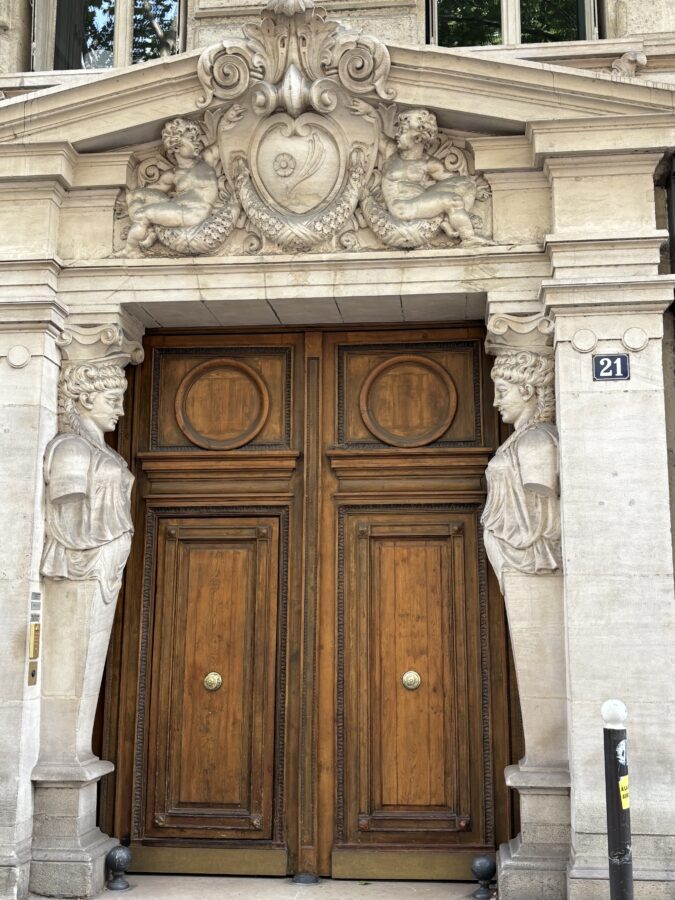



Hat of the day was on rue Muffetarde. Taking photos of children is a ”no-no” but I am quick and subtle.
Hope you enjoyed our stroll and are having a super weekend. By the way, many thanks for the wonderful comments. I read every one so they will post. They boost my spirits. Just not time to always respond!
L & B
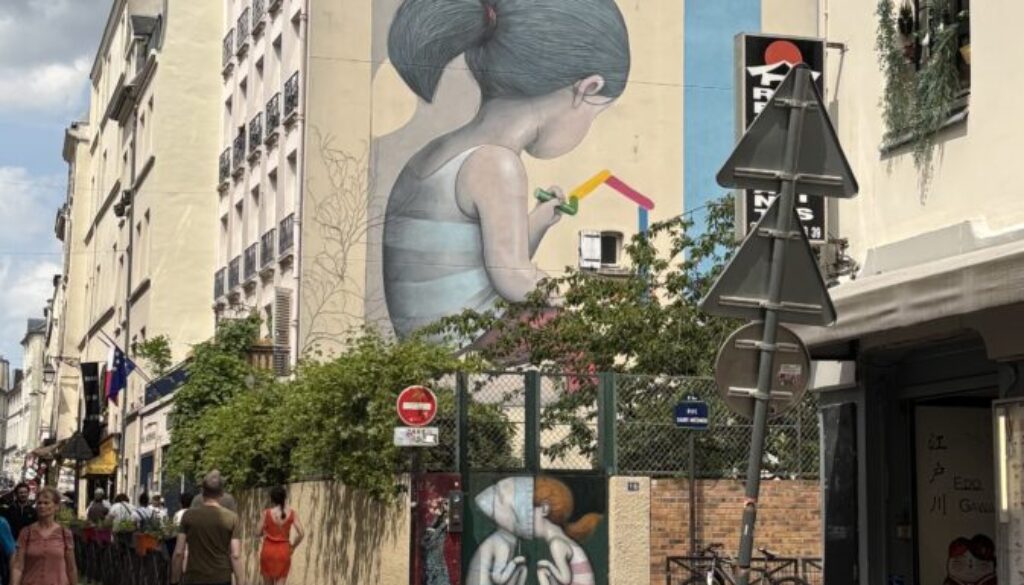
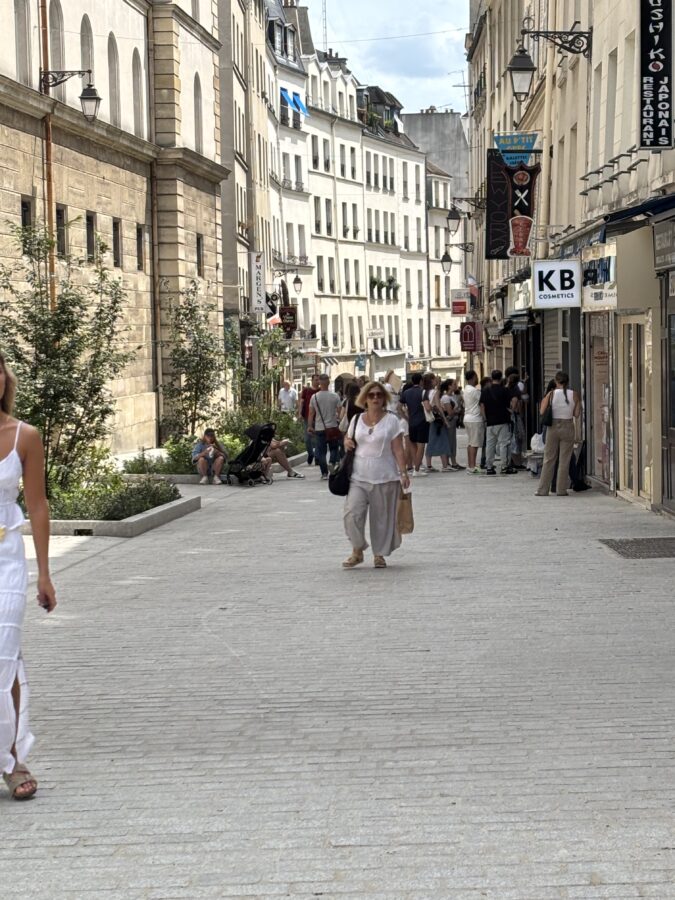



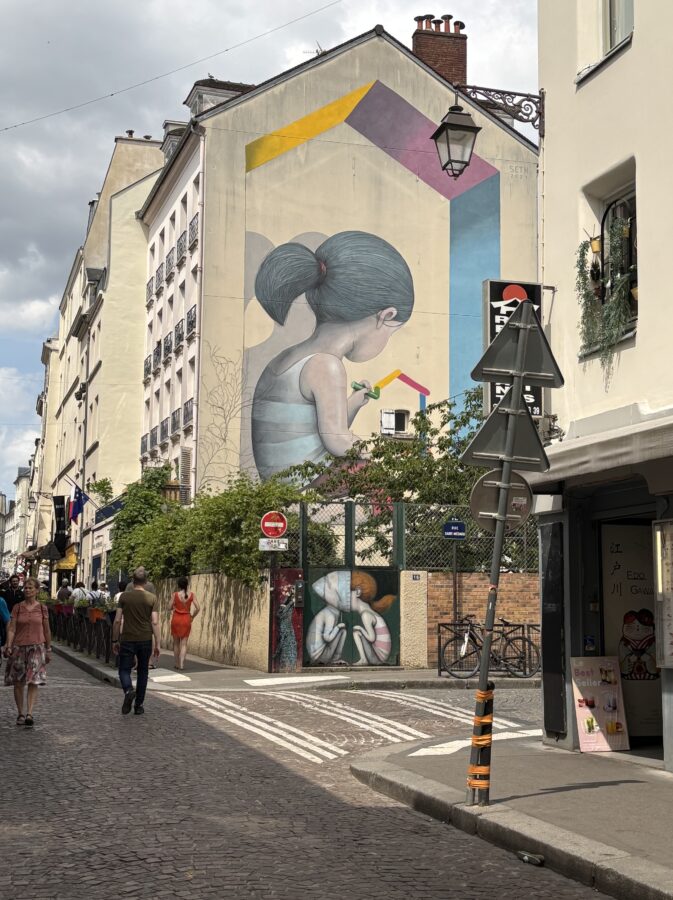

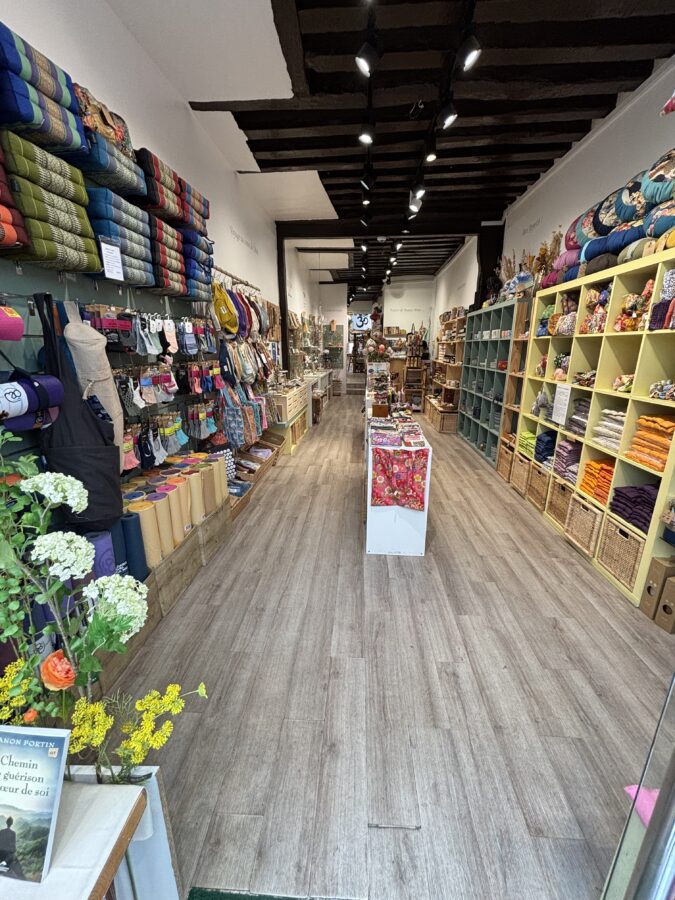
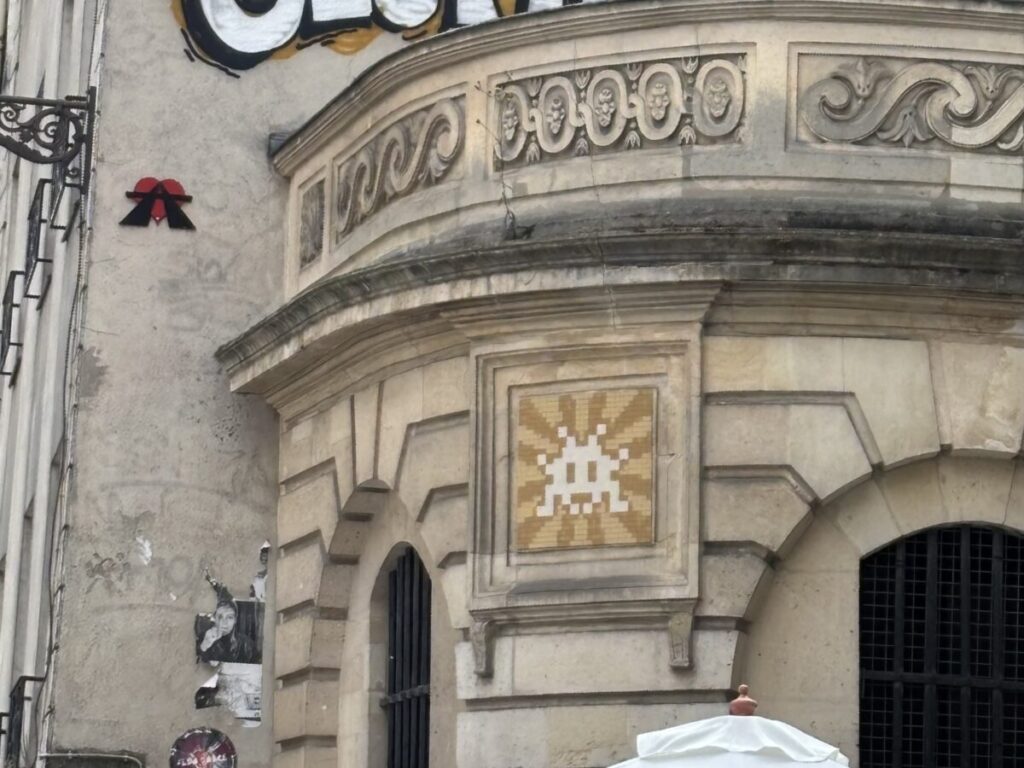
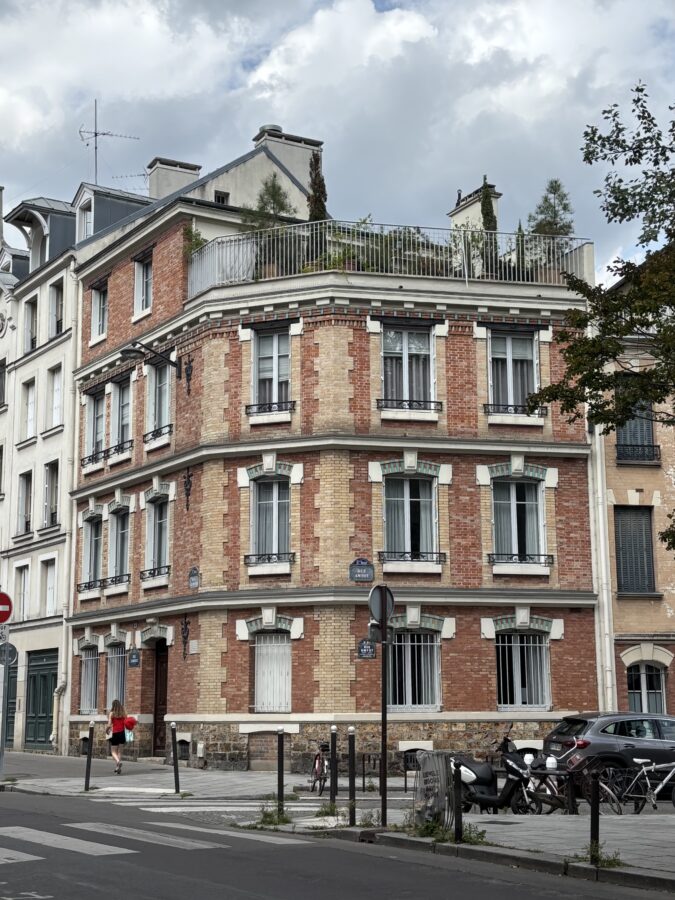






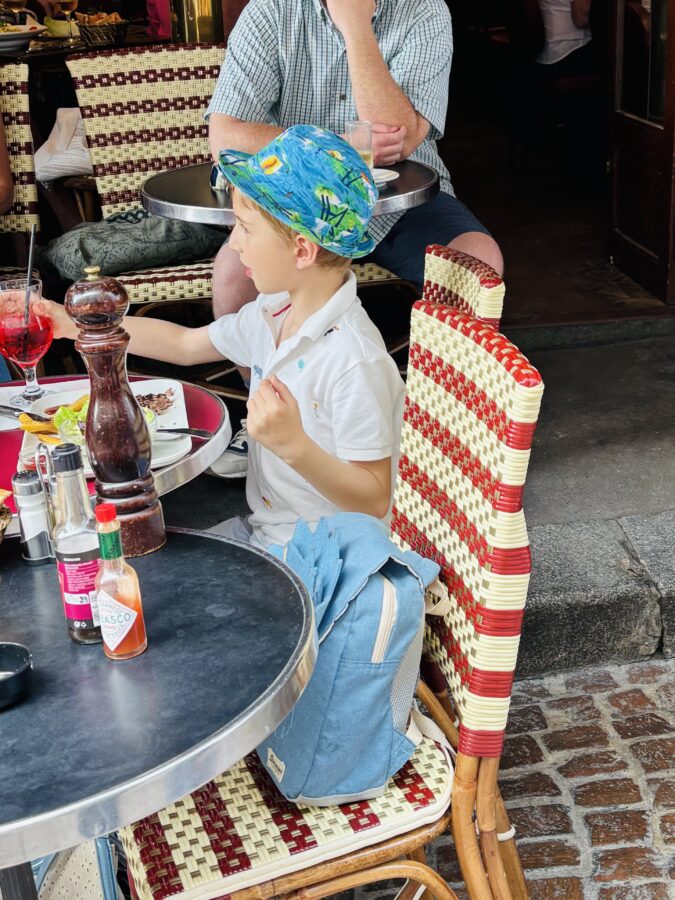
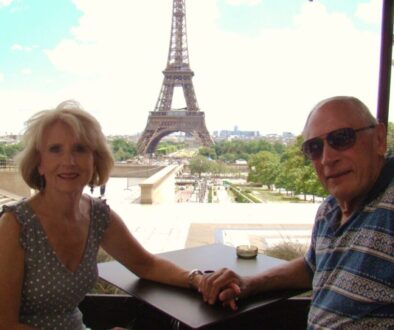
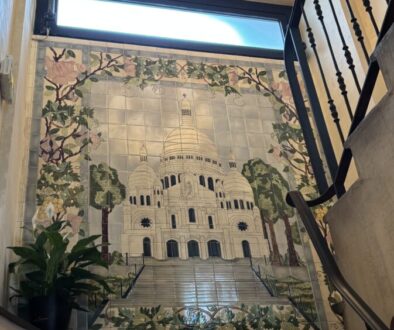

June 15, 2025 @ 7:54 am
I enjoyed your stroll vicariously! Don’t think I could have done that with all the heat! We’ve had several days of terribly hot weather. I just hope your cooler morning means it will cool down for us too! That mural is by the same artist who has paintings up at the top of Belleville! I love their work! And yes, you should buy the dress! It would look great at the Hope Gala in August! 😉
June 15, 2025 @ 7:58 am
You will enjoy this next comment. I misspelled Mouffetard throughout the entire post. Tried to correct it but sometimes that doesn’t work. Oh well!
June 15, 2025 @ 10:12 am
The rope dress was … interesting, but I think you should pass, Linda. :o)
June 15, 2025 @ 11:43 am
I am enjoying your trip so much. You have been busy and have done a lot. I don’t know if the Louvre. Couture exhibition is still on but it was fabulous. I had not spent much time in the Napolean apartments in that wing and enjoyed it as much as the couture. One other thing, have you been to the local dancing at the base of Rue Moufftard on Sunday morning? It is really something fun to enjoy—good local color and a neighborhood feel. Hello to Bernie. We so enjoyed our short visit with you at Carette. Mike and I went back there for a rest stop in March.
June 15, 2025 @ 1:04 pm
We have NOT been to the local dancing on rue Mouffetard on Sundays but a great idea. Seems like I’ve read about it. We saw the Dior show a dozen years ago at Musee des Arts Décoratifs in Le Louvre. I can’t imagine anything better but we will check into it.
June 15, 2025 @ 11:53 am
Your photo of “the beginning of Ike Saint Louis” is Quay d’Anjou and we have twice rented a flat just around that corner. Nice memories for us and great to see it in the summer. Merci!
June 15, 2025 @ 12:07 pm
Well, that certainly was a fun, little stroll! As always, the photos were wonderful and the commentary so interesting. Thanks for another day in Paris!
June 15, 2025 @ 12:52 pm
How are you doing? And how is Nicole? Give her my love.
June 15, 2025 @ 12:32 pm
Thanks, Linda
Great pics. Love the Tabasco sauce on the young man’s table.
June 15, 2025 @ 1:17 pm
You’ve probably gone over this before, but I found the explanation of some of Paris architecture interesting.
Before George Haussmann redesigned Paris, the city was densely populated, with narrow, winding streets, and poor sanitary conditions. The city was becoming unlivable. Many Paris streets and buildings hadn’t changed since the Middle Ages, and the cramped conditions and crumbling infrastructure were taking a toll on the people. There was little sunlight, due to the narrow streets, and the population density led to massive cholera outbreaks. There was also rampant crime and poverty among the twisting lanes.
Haussmannian architecture, characterized by uniform, elegant buildings with light stone facades, wrought iron balconies, and symmetrical designs, is the defining style of Paris. It emerged from Baron Haussmann’s large-scale urban renovation of Paris in the mid-19th century, which aimed to modernize the city by creating wide boulevards, green spaces, and improved infrastructure. This style of architecture is synonymous with Parisian charm and is still highly sought after today.
Haussmann’s plan included the creation of wide, tree-lined boulevards, which replaced the narrow, winding streets of the old city.
Many Haussmannian buildings have interior courtyards, providing light and ventilation to the apartments.
Haussmannian buildings are typically multi-story, with a ground floor often reserved for commercial use and the upper floors for residential apartments.
Many of Haussmann’s corner buildings had rounded corners to aid traffic flow.
June 15, 2025 @ 2:00 pm
Yes, Pat, good info. There are many books written about this because it disrupted neighborhoods and caused people to lose their homes. All of this was commissioned by Napoleon III. From a military perspective, it also enabled the rulers to move troops through the city much more easily. It did create the beautiful Paris we know today. In the Marais, you can still see the very narrow winding lanes. Also in the Latin Quarter.
June 15, 2025 @ 2:30 pm
The Dior show was fabulous and this is totally different because of the setting and theme and every bit as good, possibly better, but probably a toss up.
June 15, 2025 @ 8:55 pm
Hi Linda,
I really enjoy seeing all of your pictures. I would love to see some pics of your apartment.
I also wanted to say that I just read your letter to the editor in the Huntsville Times. Well said !!!!
June 16, 2025 @ 6:07 am
I googled the image (just learned you can do that!) of the door with the two statues. It acknowledges it but didn’t find any specifics.
Curious about the building you posted towards the end…looks like half a building! Is that one that we walked by? I recall Steve making a similar comment.
Sad I have no idea how many years will pass before I return but excited to EXPLORE Paris so much more when I do!!
Last, the shoes. Living adjacent to a college town, I learned that shoes strung over electrical wires lets ppl known that’s a spot they can come to for drugs. Although I’ve always wondered “why” which sent me back to Google:
The phenomenon of seeing shoes, often sneakers, hanging from power lines, sometimes called “shoefiti,” has a variety of proposed meanings and purposes. Here’s a breakdown of the common theories:
1. Gang Activity:
Some theories suggest that shoes on power lines are used by gangs to mark their territory, signal a crime, or indicate a location for drug deals.
However, police and other sources have refuted this theory, stating it lacks concrete evidence and that drug dealers are unlikely to advertise their activities in such a way.
2. Memorials:
A common belief is that the shoes are a memorial to someone who has died, particularly victims of gun violence.
The shoes may symbolize the deceased person “walking in heaven”.
3. Celebration and Rites of Passage:
The practice may originate from military traditions where soldiers throw their boots to mark the end of training or service.
Civilians may adopt this to celebrate milestones like graduation or other personal achievements.
4. Bullying or Taunting:
In some cases, shoes may be tossed onto power lines as a form of bullying, especially towards vulnerable individuals.
The shoes might be stolen and thrown out of reach to humiliate or annoy the victim.
5. Artistic Expression:
Shoe tossing can be seen as a form of street art or “shoefiti,” with people using shoes as a creative outlet.
Some artists intentionally use shoes and power lines to create visually striking installations.
6. Accidental or Imitation (self explanatory)
June 16, 2025 @ 8:02 am
Most interesting, Natalie. Merci beaucoup!!!
June 16, 2025 @ 11:07 am
Linda,
Happy to see you had a few easier days. Thanks for sharing the interesting sights along the way. It’s fun to travel with you.
Cindi